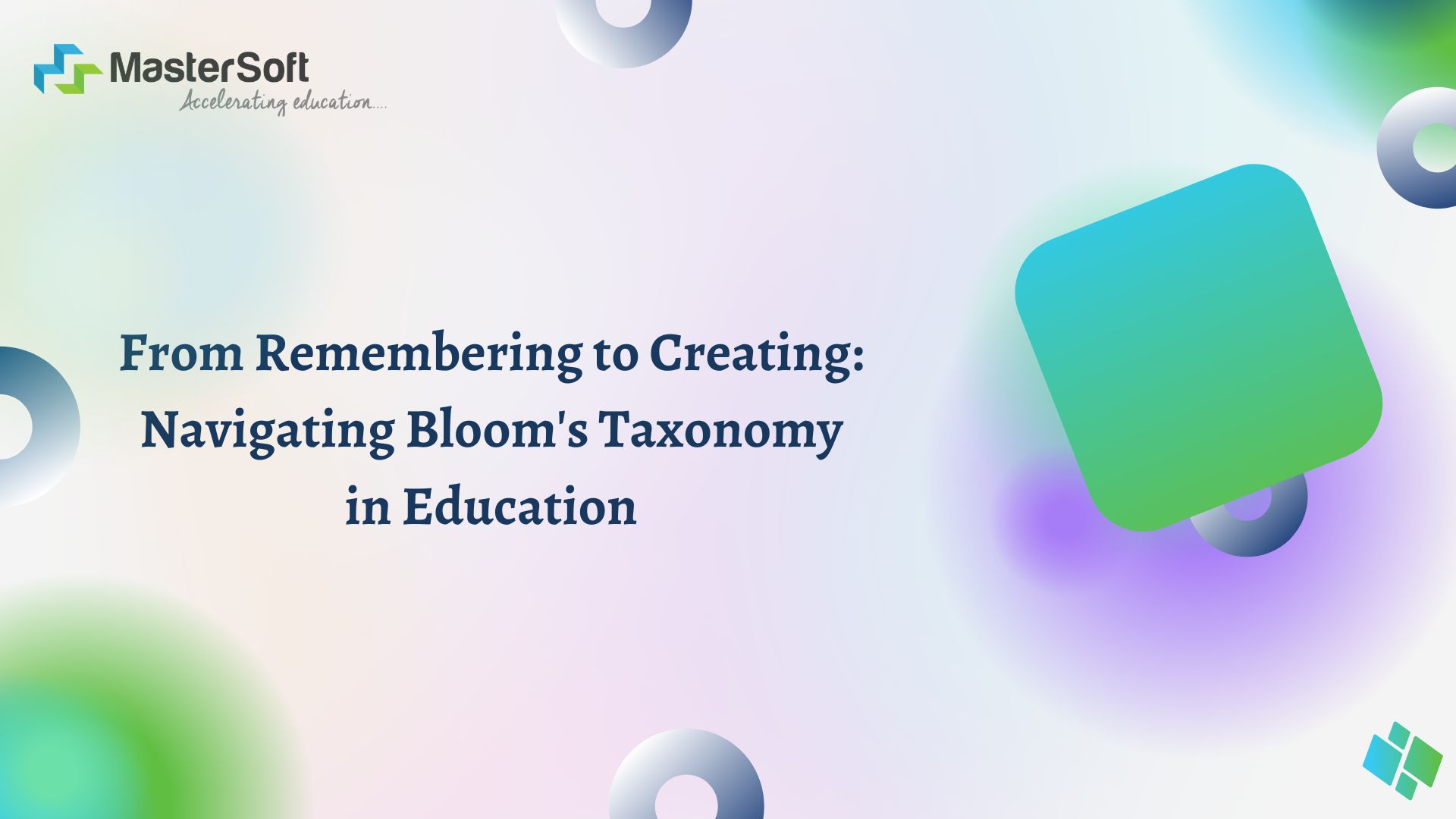In the ever-evolving landscape of education, fostering deep understanding and critical thinking skills is paramount. At the core of this endeavor lies Bloom’s Taxonomy, a seminal framework that guides educators in facilitating cognitive growth and mastery among students. From the foundational stage of remembering facts to the pinnacle of creating original ideas, Bloom’s Taxonomy provides a roadmap for navigating the journey of learning. In this blog, we’ll explore the significance of Bloom’s Taxonomy in education, tracing the progression from remembering to creating and examining its practical implications for teaching and learning.
Understanding Bloom’s Taxonomy:
Developed by educational psychologist Benjamin Bloom in the 1950s, Bloom’s Taxonomy categorizes cognitive skills into six hierarchical levels, each representing a progressively higher order of thinking. These levels are:
- Remembering
- Understanding
- Applying
- Analyzing
- Evaluating
- Creating
At the base of the taxonomy lies remembering, where learners recall information or facts. As students ascend through the levels, they engage in increasingly complex cognitive processes, culminating in the creation of original ideas, solutions, or products.
The Journey Begins with Remembering:
Remembering serves as the foundation upon which higher-order thinking skills are built. In this initial stage, learners demonstrate their ability to recall information, facts, or concepts without necessarily understanding their significance. Remembering involves tasks such as memorization, repetition, and recognition, laying the groundwork for deeper learning and comprehension.
Moving Beyond Recall: Understanding, Applying, and Analyzing:
As students progress through Bloom’s Taxonomy, they move beyond simple recall to deeper levels of understanding and application. Understanding requires learners to grasp the meaning of the information they have memorized, demonstrating comprehension through explanation, interpretation, and paraphrasing.
Applying takes learning a step further by challenging students to use their understanding in new and diverse contexts. This level emphasizes the practical application of knowledge, requiring learners to solve problems, complete tasks, and demonstrate their skills in real-world scenarios.
Analyzing represents a critical phase in the cognitive journey, where students learn to break down information into its component parts, discern patterns, and identify relationships. Through analysis, learners develop a deeper understanding of the subject matter, enabling them to draw connections and draw conclusions based on evidence and reasoning.
Striving for Evaluation and Creation:
At the apex of Bloom’s Taxonomy are the levels of evaluating and creating, representing the pinnacle of cognitive achievement. Evaluation involves making judgments and assessments based on established criteria, requiring students to weigh evidence, consider perspectives, and form opinions. This level fosters critical thinking and discernment, empowering learners to assess the value and validity of information.
Finally, creating represents the ultimate level of cognitive complexity, where students demonstrate their ability to generate original ideas, products, or solutions. Through creativity and innovation, learners transcend the boundaries of existing knowledge, contributing new insights and perspectives to their field of study.
Practical Applications in Education:
Incorporating Bloom’s Taxonomy into educational practices enables teachers to design more effective. Learning experiences that cater to diverse learning styles and abilities. By scaffolding instruction to align with the taxonomy’s hierarchical structure. Educators can guide students through progressively challenging tasks that foster intellectual growth and development.
For example, a history lesson might begin with remembering, where students memorize key dates and events. As they move through understanding and applying, they analyze primary sources, interpret historical documents, and construct timelines. At the higher levels of analyzing, evaluating, and creating, students might compare and contrast different historical perspectives. Evaluate the significance of historical events, and ultimately, develop their own historical narratives or research projects.
Conclusion:
Bloom’s Taxonomy serves as a powerful tool for educators, providing a roadmap for guiding students from remembering to creating. By systematically addressing each level of the taxonomy, teachers can cultivate a deeper understanding of content. Foster critical thinking skills, and empower students to become active participants in their own learning. As educators continue to navigate the complexities of teaching and learning, Bloom’s Taxonomy remains a steadfast companion. Guiding them in their quest to nurture the next generation of thinkers, innovators, and creators.



